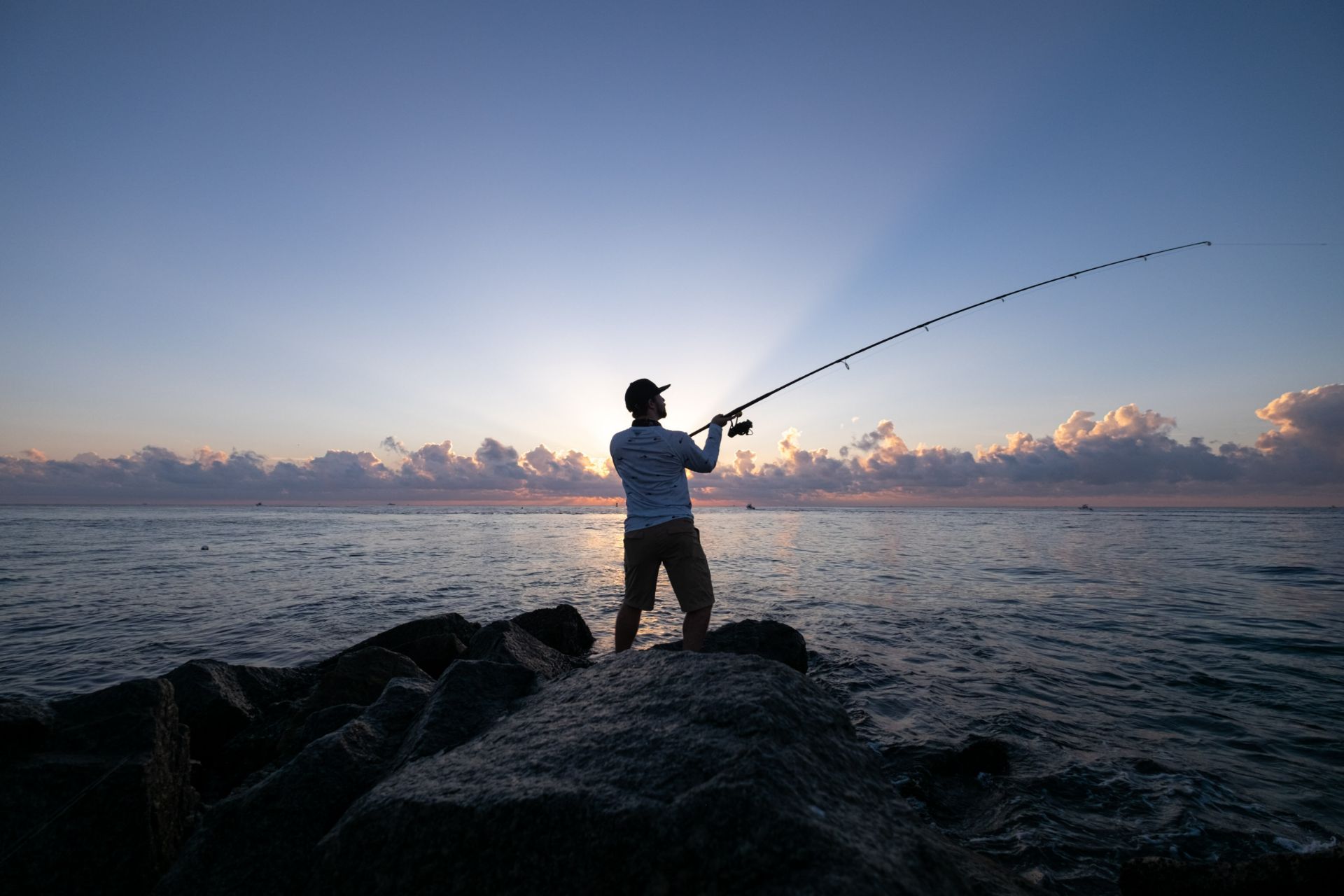
As an Amazon Associate, Modded gets commissions for purchases made through links in this post.
Those unfamiliar with fishing often believe they simply need to cast a line and wait for a bite. Although that’s the overarching idea, the sport has many nuances and complexities that beginners don’t know. One of these complexities is water temperature.
To be clear, no one has an objective answer to this question. Fishing is a game of chance. the best temperature for fishing can look quite different depending on the location, weather conditions and time of day.
You could use barometric pressure and other advanced metrics to find fish, but these analytics aren’t very helpful to the average fisherman who just wants to cast some lines. We’re going to keep things simple and break down the most ideal water temps for freshwater and saltwater fish.
Ideal Freshwater Fishing Temperatures
Freshwater fish don’t like when their environments get too hot or cold. When the water heats up, they retreat to deep pools and covered areas. That means the water temperature will significantly impact your success. These are the ideal temperature ranges for some popular freshwater fish:
- Trout: 52-64° Fahrenheit
- Musky: 60-65°
- Pike: 60-65°
- Catfish: 68-72°
- Crappie: 68-72°
- Perch: 68-72°
- Smallmouth Bass: 63-68°
- Striped Bass: 50-70°
- Largemouth Bass: 65-75°
As you can see, some fish are pickier than others when it comes to temperature. It takes a precise temperature range to find a spot with exciting catfish activity, while the trout and striped bass can tolerate warm and cold temperatures. In any case, the best temperature for fishing varies based on precipitation and time of day.
1. Precipitation
The behavior of freshwater fish can drastically change based on sky conditions and precipitation. You can expect to get the most action on cloudy days when the sun doesn’t beat down on the water’s surface. The dim lighting and calm surface tempts larger fish to leave their hiding spots and feed in open waters, and the smaller fish follow hoping to pick up the scraps.
Most fish don’t like sunny days because it makes them more vulnerable to predators, especially birds of prey. The warm water temperature and high visibility lead most fish to hide in shaded areas – under rocks, trees, anchored boats, fishing docks, etc. – which means the water won’t be very active.
Rainy days decrease water temperatures and cause fish to either hide or relocate to calmer waters. However, the hour after a rainstorm can be a phenomenal time for fishing if you move downstream. Fish will often seek the warmest and calmest pockets of water to recover after a storm
2. Time of Day
Dawn and dusk are the best times to fish in freshwater pools. The sun’s rays aren’t warm enough to disturb the water temperature, but the water near the surface is transparent enough. These conditions lead to “feeding frenzies” that make fishing almost too easy. That’s why you often see fishermen on their boats at ungodly hours in the morning.
Ideal Saltwater Fishing Temperatures
Saltwater fish have smaller temperature ranges than freshwater fish, but they can afford to be picky. They have access to miles and miles of ocean waters. If the temperature gets uncomfortable, they can always look for more amicable waters. These are the ideal ranges for some popular saltwater game fish:
- Striped Bass: 55-68° Fahrenheit
- Pacific Salmon: 42-48°
- Atlantic Salmon: 56-60°
- Billfish: 78-80°
- Redfish: 75-88°
- Tarpon: 77-81°
- Halibut: 40-42°
- Mahi Mahi: 80-82°
- Grouper: 72-75°
- Snapper: 58-62°
- Bonefish: 73-82°
All of these fish have one thing in common: they don’t stay in one place. They like to move around. If you want to have success in saltwater fishing, you need a reliable vessel to follow the best water conditions. If you read the signs correctly, you could find a perfect pocket of water full of hundreds of fish.
1. Precipitation
Cloudy days just before a cold/warm front are the best times for saltwater fishing. The clouds help stabilize the water temperature, while the incoming precipitation increases water pressure. Fish migrate closer to the surface to avoid the high pressure and look for food before the storm hits. It’s no coincidence that saltwater fishermen get excited when the water conditions are choppy. That means some good fishing is ahead.
Fishing on a sunny or rainy day is also viable, but you need to adjust the depth of your bait. If it’s cold and raining, cast your lines deeper where the fish are hiding. If it’s warm and sunny, you can keep your bait closer to the surface.
2. Time of Day
An incoming tide creates the best temperature range for most saltwater fish. The water near the shoreline becomes colder, more oxygenated and more transparent– the telltale signs of a feeding frenzy. High tides occur about every 12 hours, so remember to track your coast’s tidal changes so you choose the most opportune times.
Go Catch A Big One
Fishing is largely a game of luck, but as a general rule, the best temperature for fishing is a mild high-60s for freshwater fish and mid-70s for saltwater fish. Weather conditions also impact fish activity. An overcast morning or evening is an ideal time for fishing. Use these environmental cues to improve your catch rate and reel in a big one!
Stay up to date with the latest by subscribing to Modded Minute.
Author
Jack Shaw is a senior writer at Modded. Jack is an avid enthusiast for keeping up with personal health and enjoying nature. He has over five years of experience writing in the men's lifestyle niche, and has written extensively on topics of fitness, exploring the outdoors and men's interests. His writings have been featured in SportsEd TV, Love Inc., and Offroad Xtreme among many more publications.






